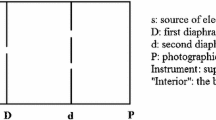Abstract
Q-factor theory has close correspondences with quantum-theoretical concepts in physics. The observation by William James, separating transitive and substantive parts of thought, and identified by him as complementariness, calls for a quantum-theoretical basis for so-called “mind.” Following the methodology suggested by James, the thought “Columbus discovered America in 1492” is subjected to Q-methodology, resulting in operant factors which are complementary to each other. The law of transformation of experience into operant factors is proof of quan- tumization of so-called “mind.” Since we replace “mind” by communica- bility, the law applies to the latter. Complementarity applies to transitive thought, whence its significance in quantum theory, where observer and observed are conjoined in some self-referential form. Bohr’s expectancy for a new epistemology based on the complementariness principle finds full support in Q-methodology, applicable to all subjectivity. Similarly, there can be unity in science, provided objective and subjective parts are granted, each rooted in quantum theoretical concepts.
Similar content being viewed by others
References
BOHR, NIELS. (1934). Atomic theory and the description of nature. Cambridge: University Press.
BOHR, NIELS. (1950). On the notions of causality and complementarity. Science, III, 51–54.
BROWN, S. R. (1968). Bibliography on Q-technique and its methodology. Perceptual and Motor Skills, Monograph Supplement 4-v26.
BURT, C. (1940). The factors of the mind. London: London University Press.
BURT, C. (1958a). Quantum theory and the principle of indeterminacy. British Journal of Statistical Psychology, XI, 77–93.
BURT, C. (1958b). Scientific method in psychology. British Journal of Statistical Psychology, XI, 105–28.
BURT, C., & STEPHENSON, W. (1939). Alternative views on correlation between persons. Psychometrika, IV, 269–81.
EDDINGTON, A. S. (1935). New pathways in science. London: MacMillan & Co.
HEARNSHAW, L. S. (1979). Cyril Burt: Psychologist. Ithaca, NY: Cornell University Press.
HEISENBERG, WERNER. (1971). Physics and beyond: Encounters and conversations. New York: Harper & Row.
HEISENBERG, WERNER. (1975). Tradition in science. In O. Gingerich (Ed.), The nature of scientific discovery (pp. 219–236). Washington, DC: Smithsonian Institute Press.
HOLTON, GERALD. (1973). Thematic origin of scientific thought: Kepler to Einstein. Cambridge: Harvard University Press.
JAMES, WILLIAM. (1891). The principles of psychology (Vols. 1–2). London: MacMillan.
KEYNES, J. M. (1921). A treatise on probability. London: MacMillan.
MORISON, S. E. (1942). Admiral of the ocean sea. (Vols. 1–2). Boston: Little Brown & Co.
RUSSELL, BERTRAND, & WHITEHEAD, A. N. (1912). Principia mathematica (Three volumes), Vol. I. London: MacMillan and Co.
SHANNON, & WEAVER. (1949). The mathematical theory of communication. Urbana: University of Illinois Press.
SPEARMAN, C. E. (1914). The theory of two factors. The Psychological Review, XXI, 101–115.
SPEARMAN, C. E. (1937). Psychology down the ages (Two volumes). London: MacMillan and Co.
STEPHENSON, WILLIAM. (1935). Technique of factor analysis. Nature (London), 136, P. 247.
STEPHENSON, W. (1936). The foundations of psychometry: Four factor systems. Psychometrika, 1, 195–209.
STEPHENSON, W. (1953). The study of behavior: Q-technique and its methodology. Chicago: University Press.
STEPHENSON, W. (1979). Q-methodology and Newton’s fifth rule. American Psychologist, April, 354–357.
STEPHENSON, W. (1980). Consciring: A general theory of subjective communicability. In D. Nimmo (Ed.), Communication yearbook 4. New Brunswick, NJ: Transaction Books.
STEPHENSON, W. (1982). Q-methodology, interbehavioral psychology, and quantum theory. The Psychological Record, 32, 235–248.
STEPHENSON, W. (1982). Newton’s fifth rule and Q-methodology: Application to self psychology. Operant Subjectivity, January, Vol. 5, 2, 37–57.
STEPHENSON, W. (1983). Quantum theory and Q-methodology: Fictionalistic and probabilistic theories conjoined. The Psychological Record, 33, 213–230.
STEPHENSON, W. (1986). William James, Niels Bohr, and Complementarity: I—Concepts. The Psychological Record, 36.
Author information
Authors and Affiliations
Rights and permissions
About this article
Cite this article
Stephenson, W. William James, Niels Bohr, and Complementarity: II—Pragmatics of a Thought. Psychol Rec 36, 529–543 (1986). https://doi.org/10.1007/BF03394971
Published:
Issue Date:
DOI: https://doi.org/10.1007/BF03394971




